The Nothing Phone (3) stands out in the flagship segment with its unique design, transparent back, and Glyph Matrix. Featuring a vibrant 6.67-inch AMOLED display and powered by the Snapdragon 8s Gen 4, it delivers solid performance. Its triple 50MP camera system is impressive, though low-light capabilities could improve. The phone excels in battery life and fast charging, but at ₹79,999, it faces tough competition from the iPhone 16, which offers better ecosystem integration, and the Galaxy S25, known for its powerful chipset and extended software support. While the Nothing Phone (3) is a fun and capable option for those seeking something different, others may prefer the more established choices.
The Good
- Unique design with a transparent back and Glyph Matrix.
- High-quality AMOLED display with 120Hz refresh rate.
- Solid performance with Snapdragon 8s Gen 4 chip.
- Clean software experience with long-term updates promised.
The Bad
- Premium price may not justify features for some users.
- Battery life could be better under heavy use.
- Lacks Netflix HDR certification for streaming.
- Glyph Matrix novelty may wear off over time.
-
Build & Design
-
Performance
-
Camera
-
Battery
The Nothing Phone (3) marks the bold entry into the flagship smartphone arena, priced at ₹79,999 for the 12GB RAM + 256GB storage variant and ₹89,999 for the 16GB RAM + 512GB model. Positioned to compete directly with heavyweights like the Apple iPhone 16 and Samsung Galaxy S25, the Nothing Phone (3) aims to carve a niche with its quirky design, innovative Glyph Matrix, and a promise of a clean, bloat-free software experience. But at this premium price, does it deliver enough to stand out in a hyper-competitive market? After spending time with the device, here’s a detailed review.
Design & Build
The Nothing Phone (3) immediately grabs attention with its unique design, which has been a standout feature of the brand since its inception. It maintains the signature transparent back panel, showcasing intricate internal components and exposed screws, creating a futuristic look that emphasizes individuality. Available in Black and White, the phone’s design combines sci-fi minimalism with industrial chic, setting it apart from the sleek, minimalist styles of the iPhone 16 and Galaxy S25.
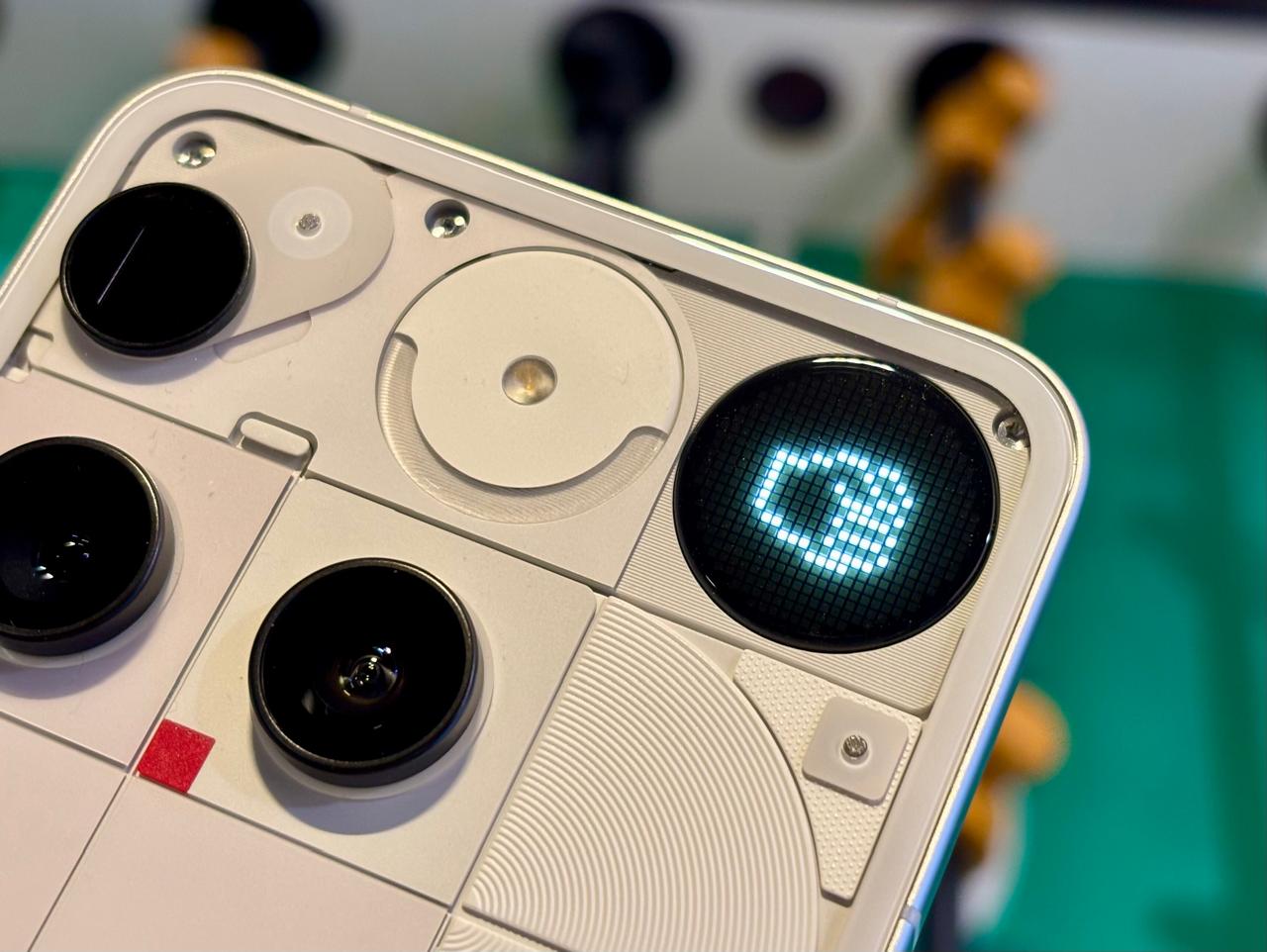
The standout feature is the new Glyph Matrix, a programmable mini-LED screen that replaces the iconic Glyph LED strips found in previous models. Comprising 489 micro-LEDs, this dot-matrix display is located in the top-right corner of the back panel and serves both functional and playful purposes. It can display notifications, battery levels, a stopwatch, weather updates, and even function as a pixelated viewfinder for selfies. Fun “Glyph Toys,” like Spin the Bottle and Rock, Paper, Scissors, add a unique touch. Third-party app integration is promised, potentially unlocking even more creative uses. However, the novelty may wear off for some users, and its practicality will depend on how developers leverage the feature.
The rear of the phone features a quirky triple-camera setup, with two lenses arranged in square blocks and the third in a diagonally slotted oval, marking a departure from the circular or pill-shaped modules of the Nothing Phone (3a) and (3a Pro). Notably, despite the unconventional camera placement, the device does not wobble when used on a flat surface. The flat aluminum frame, combined with Gorilla Glass 7i on the front and Gorilla Glass Victus on the back, ensures a premium build quality. At 8.4 mm thick and weighing 218 grams, it is slightly chunkier than the Galaxy S25 (7.6 mm) but feels ergonomic and sturdy. It also boasts an IP68 rating for dust and water resistance, a first for Nothing phones.
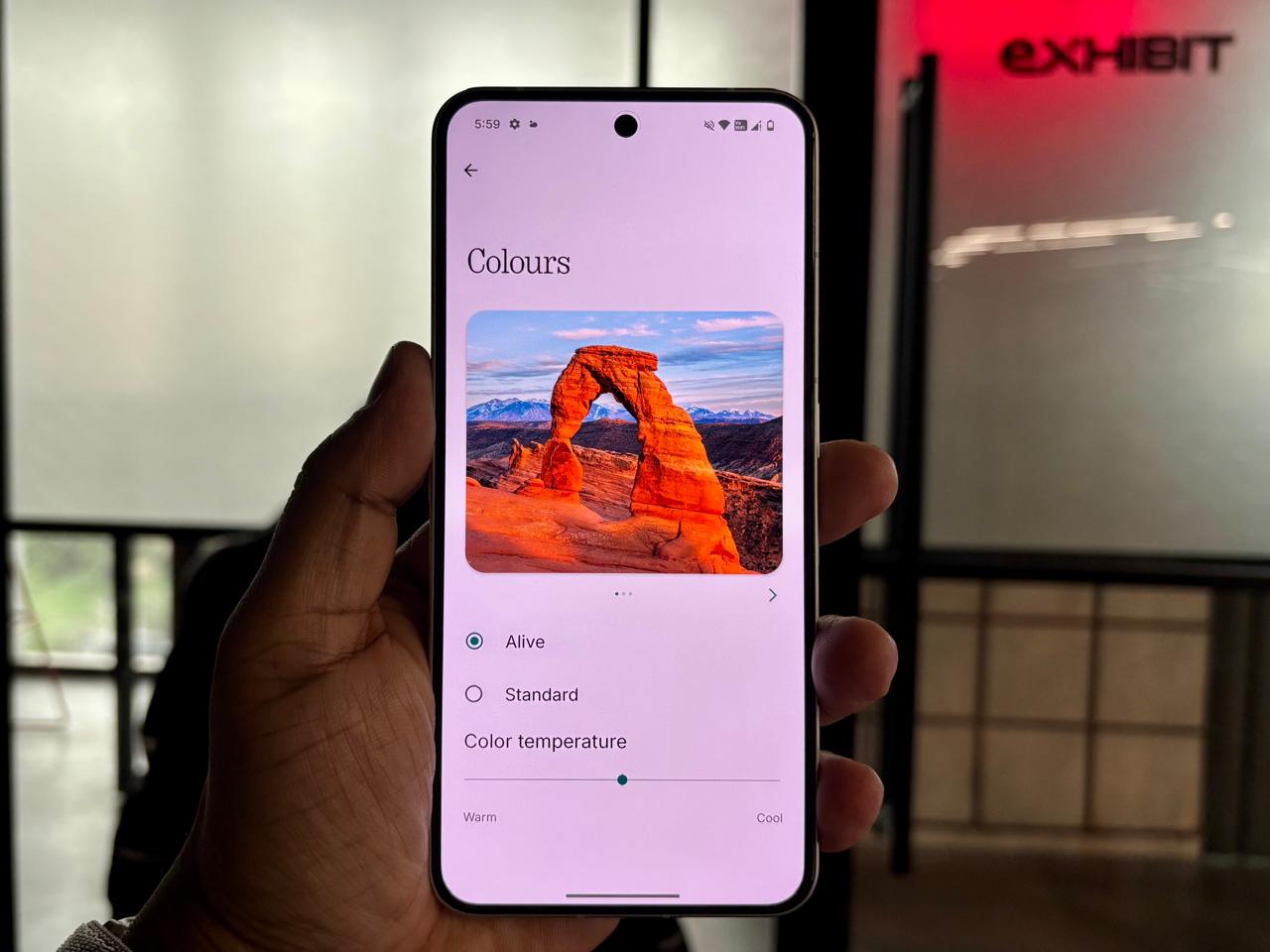
The 6.67-inch AMOLED display is a visual treat, featuring a 120Hz adaptive refresh rate and a peak brightness of 4,500 nits. Protected by Gorilla Glass 7i, it supports 2,160Hz PWM dimming to reduce eye strain in low-light conditions. Colors are vibrant, and the display handles HDR content well—particularly on YouTube, though it lacks certification for Netflix. Watching movies or scrolling through social media is a delight, thanks to smooth animations and excellent outdoor visibility. The Essential Key, introduced in the Nothing Phone (3a) series, is retained, providing quick access to the Essential Space app for AI-driven features like summaries and translations.
While the design is undeniably unique, it can be divisive. Some users will appreciate its bold, retro-futuristic vibe, while others may find it too unconventional compared to the polished, understated aesthetics of Apple and Samsung. The flat frame accommodates all standard buttons, including the power button and volume rocker, which offer a premium tactile feel. Dual stereo speakers, with the earpiece doubling as a speaker, deliver crisp, balanced audio. However, while the haptics are precise, they do not match the nuanced feedback offered by the iPhone 16 Pro or Pixel 9 Pro.
Performance
The device is powered by the Qualcomm Snapdragon 8s Gen 4, a 4nm chip. While it falls just short of the flagship Snapdragon 8 Elite found in the Galaxy S25 and OnePlus 13, the performance difference is negligible for most everyday tasks. The phone is available in two configurations: 12GB/256GB and 16GB/512GB, allowing it to handle multitasking effortlessly. Whether you’re using apps like Zoom, Chrome, and Instagram or performing more intensive tasks like video editing in VN, it manages smoothly. Benchmark tests show solid performance, with Geekbench 6 scores of approximately 2,229 in single-core and 7,279 in multi-core, which is slightly behind the Galaxy S25 (1,800/5,200) and Pixel 9 (1,700/4,800).
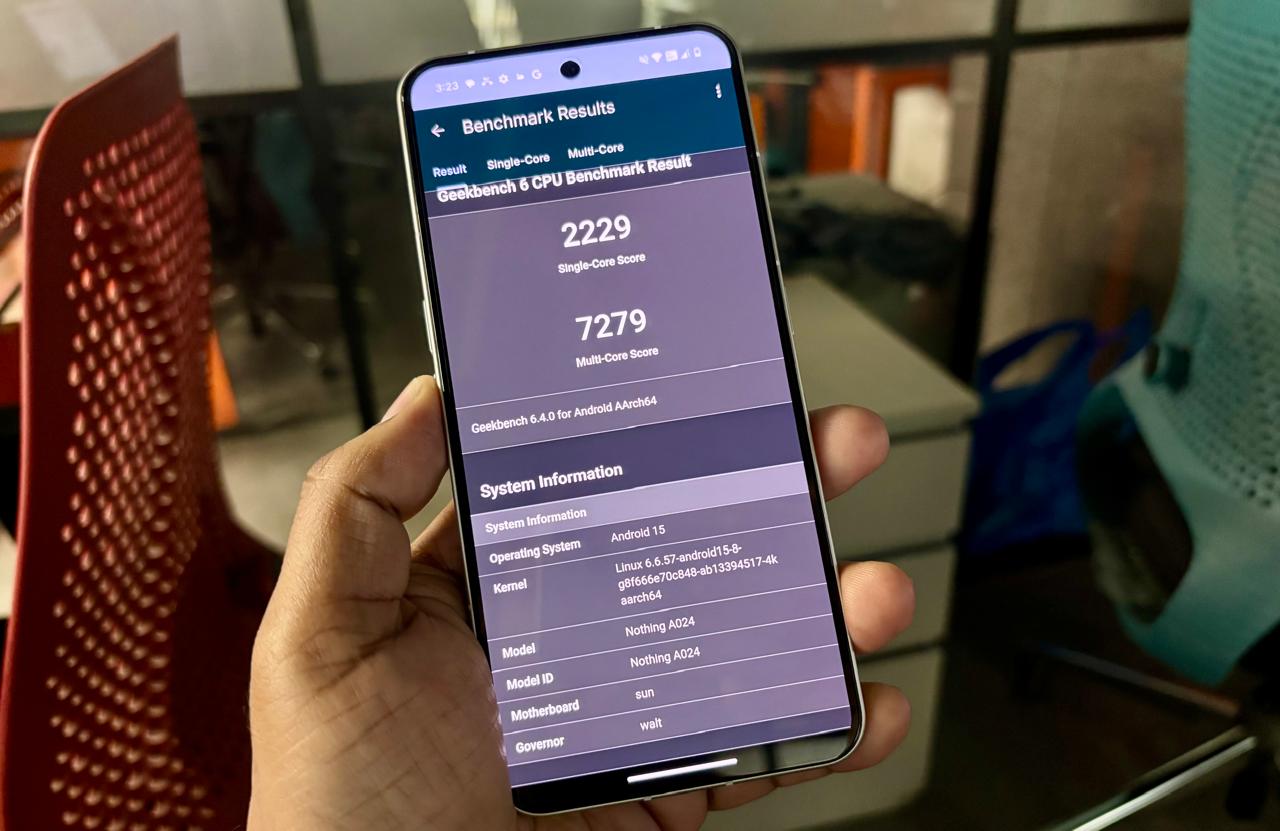
Gaming performance is impressive, with titles like BGMI and Call of Duty: Mobile running smoothly at ultra settings and minimal frame drops. The phone maintains good thermal efficiency, avoiding excessive heat even during extended gaming sessions.
It runs on Nothing OS 3.5, based on Android 15, providing a clean, bloat-free, and near-stock software experience with thoughtful customizations. The promise of Nothing OS 4.0 (Android 16) by Q3 2025, along with five years of operating system updates and seven years of security patches, ensures longevity. However, this commitment lags behind that of Samsung and Google, who offer seven years of OS updates. The Essential Space app does integrate AI features like text summaries and translations, but these are not particularly groundbreaking compared to what competitors offer.
Camera
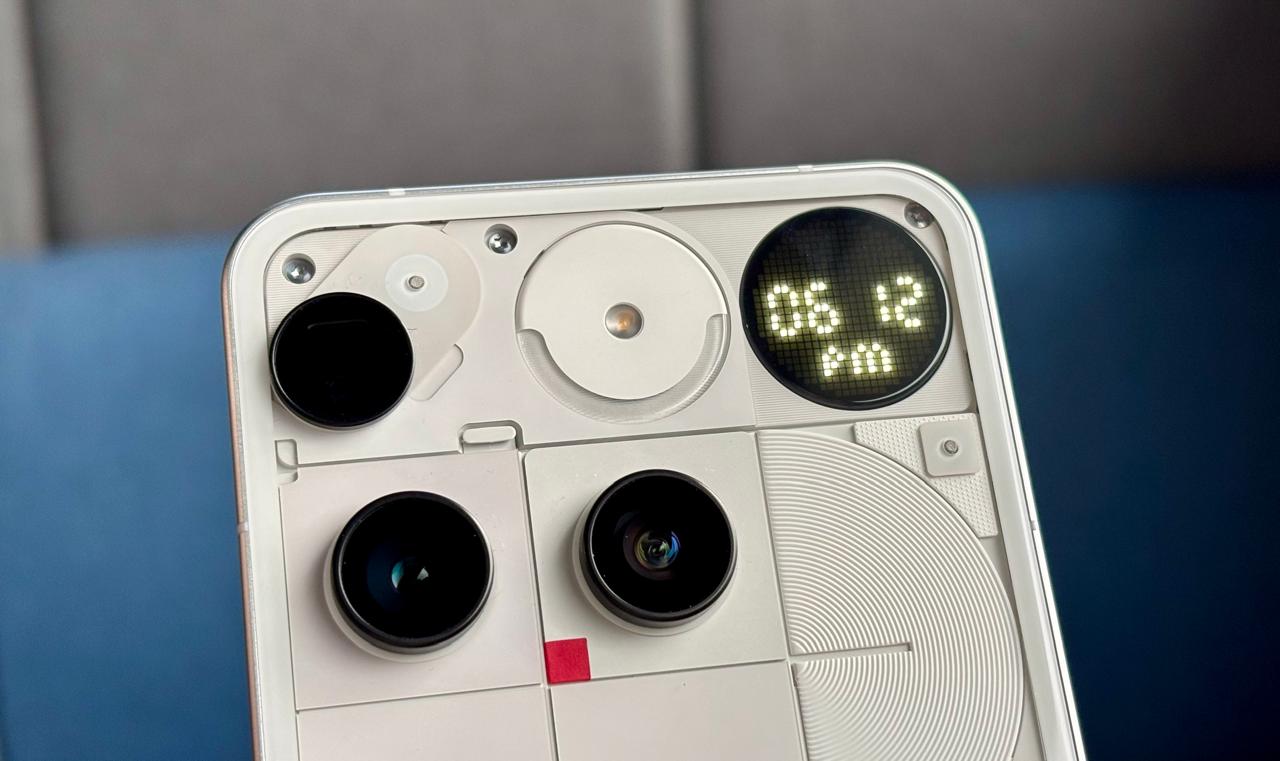
The Nothing Phone (3) features a quad-camera system, including three 50MP rear sensors: a main camera, an ultrawide lens, and a periscope telephoto lens, as well as a 50MP front camera. The main camera captures sharp and vibrant images in daylight, showcasing natural colors and good dynamic range. The 50MP ultrawide lens offers a 114-degree field of view, making it ideal for landscapes, although it does struggle with edge distortion. The standout feature is the 50MP periscope telephoto lens, which provides 3x optical zoom, 6x in-sensor zoom, and up to 60x digital zoom with AI Super Res, delivering impressive clarity at up to 10x zoom.
In low-light conditions, performance is decent but falls short compared to the Pixel 9 and Galaxy S25, often showing some loss of detail in night shots. The 50MP selfie camera produces sharp images. However, it can overprocess photos in dim lighting, resulting in unnatural skin tones.
When compared to the iPhone 16’s dual-camera system (48MP main, 12MP ultrawide) and the Galaxy S25’s triple-camera setup (50MP main, 12MP ultrawide, 10MP telephoto), the Nothing Phone (3) holds its own, particularly thanks to its periscope lens. However, Google’s computational photography and Apple’s colour consistency still have an advantage in challenging lighting conditions.
Battery
The Nothing Phone (3) boasts an impressive 5,500mAh battery, one of the largest in its category, surpassing the iPhone 16’s 3,561mAh and the Galaxy S25’s 4,000mAh. In everyday use, it easily lasts an entire day with moderate activities such as social media browsing, document editing, video streaming, and light gaming, typically ending the day with around 37% battery remaining. In a 4K video playback test lasting 30 minutes, it only consumed 6% of the battery, indicating that you could watch multiple movies on a single charge.
The phone supports 65W wired charging, reaching 50% capacity in approximately 20 minutes and achieving a full charge in roughly 45 minutes, which surpasses the Galaxy S25’s 25W and the iPhone 16’s 30W charging speeds. Additionally, it offers 15W wireless charging; however, it lacks reverse wireless charging, a feature that the Galaxy S25 provides. One downside is that no charger is included in the box, which is disappointing at this price point. Fortunately, standby battery drain is minimal, thanks to the optimization of Nothing OS, making battery life one of the phone’s standout features.


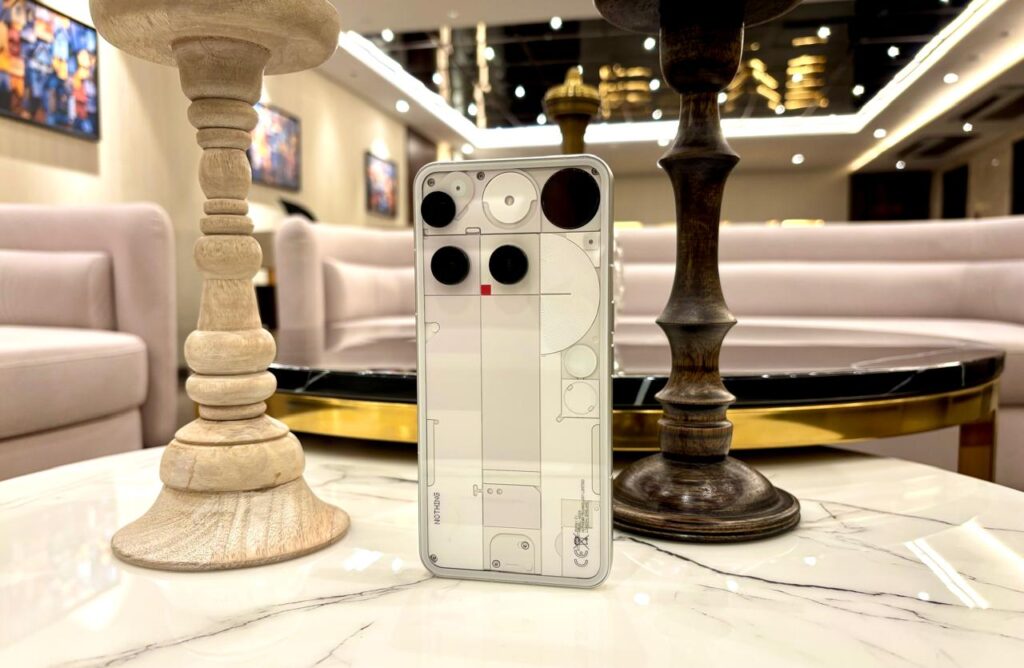
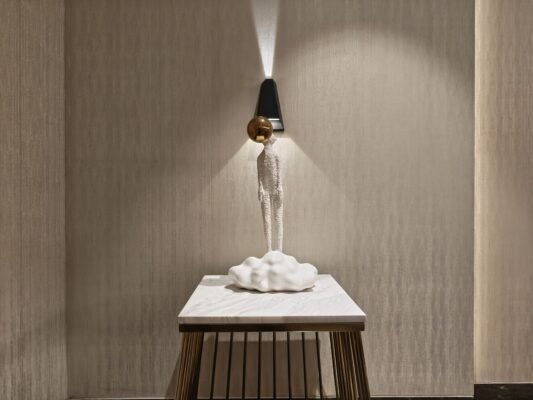
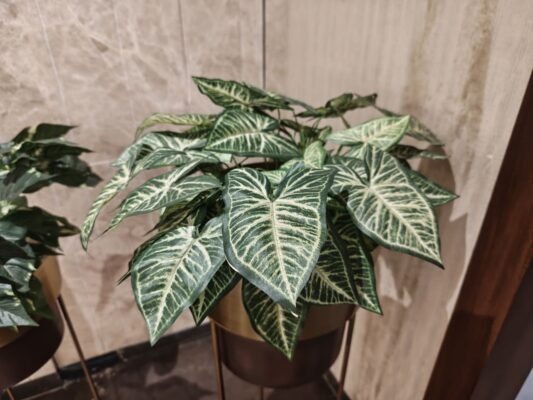
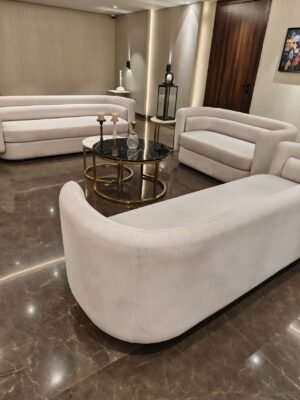
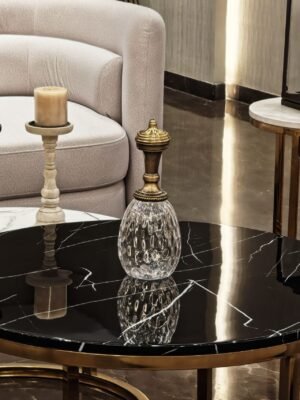
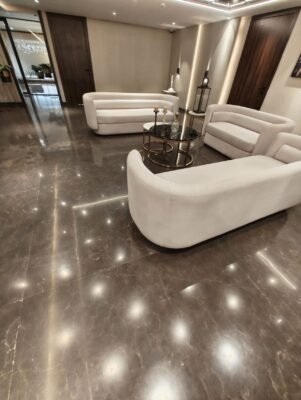




2 Comments
Pingback: Himanshu Tandon Appointed VP of Business at CMF by Nothing
Pingback: Vivo X Fold 5 & X200 FE Launching in India on July 14